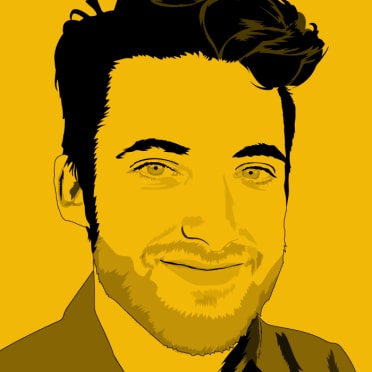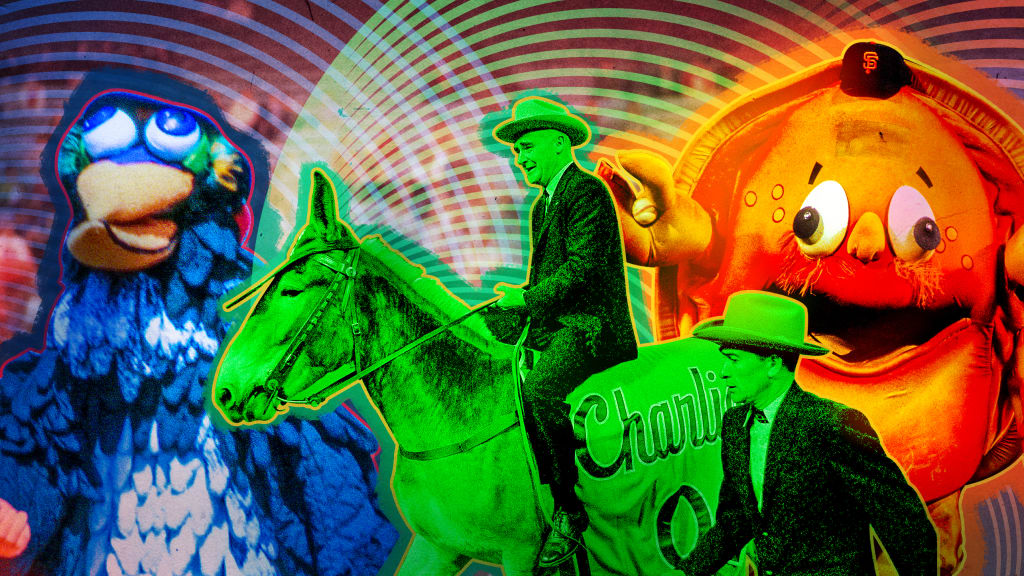
Nearly 60 years ago, as the newly formed Mets looked to win over New York, the team enlisted comic book artist Al Avison to create a character that would endear them to fans. They eventually landed on Mr. Met, a cartoon man with a giant baseball for a head -- and MLB's first official, live, costumed mascot was born.
We've come a long way since then. There are racing pierogis and rally squirrels, moose and mischievous aliens, elephants and dinosaurs and ... whatever the Phillie Phanatic is (a bird, somehow?). But the road to this mascot golden age wasn't always the smoothest. Not every idea can be a winner. Sometimes, in the name of innovation, things are bound to get weird -- like, really, really weird. And so, in appreciation of our furry forefathers, let's remember some of the most utterly bizarre mascots the big leagues have seen.
Homer the Beagle, Mets, 1962
While Mr. Met was and remains a pioneer, he wasn't actually the team's first mascot. When the Mets began their inaugural season at the Polo Grounds, they did so with a floppy-eared beagle named Homer.
Ability to adorably hold banners in his mouth? Check.
Ability to not cause constant chaos? Not so much.
Mets management originally wanted Homer to sit in the dugout with the team, but he immediately got on manager Casey Stengel's nerves and was barred from the bench. He was also supposed to round the bases after Mets home runs -- but on his first attempt, he rounded first, headed for second, then took a detour into center field. According to Roger Angell, it took “three fielders, two ushers and [his] handler" to wrangle Homer in. He was subsequently relieved of his duties.
Charlie-O, A’s, 1965-76
The A's had used an elephant as their team symbol since the days of Connie Mack -- it was a dig at John McGraw, manager of the rival Giants, who'd once cracked that A's owner Ben Shibe had bought himself "a white elephant." But after the team moved to Kansas City in 1955, new owner Charles O. Finley -- never one to shy away from a bold move, like, say, hiring Miss USA as a bat girl -- wanted to put his own stamp on the franchise (and/or quell rumors that he was planning on relocating again, this time to California).
Luckily, an idea was hanging out just beyond the right-field fence. Missouri governor Warren Hearnes had gifted the team a mule as a welcome present upon arriving in K.C. It lived on a grassy hill at Municipal Stadium, part of a larger barnyard display, but upon learning of the animal's storied history -- it's the state's official animal, inspired by its service helping Allied forces transport supplies during both World Wars -- Finley decided to make it the A's new mascot.
He called the mule Charlie-O, and he took it everywhere.
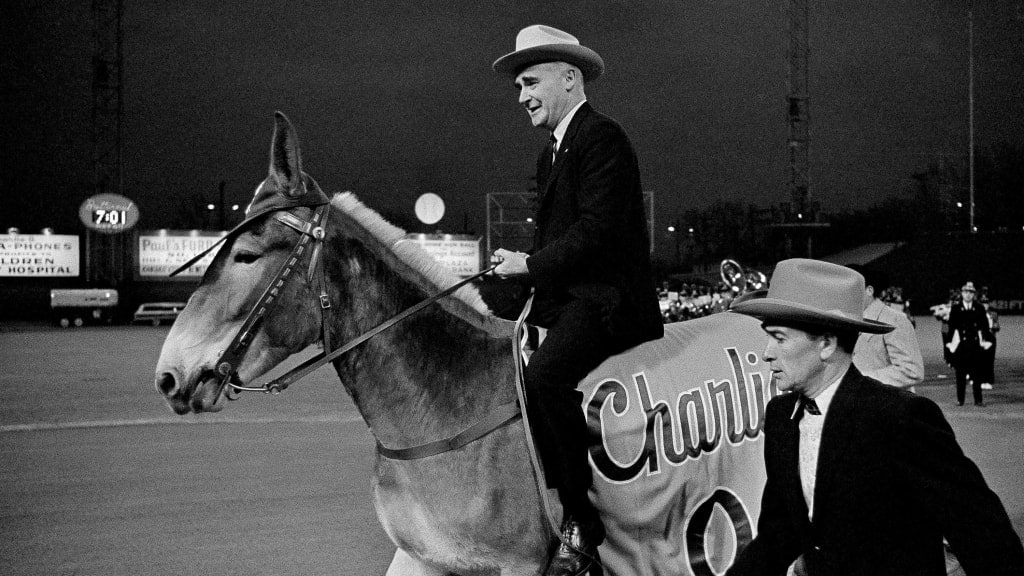
He took it to cocktail parties. He took it to the press box. He even used it as a bullpen car of sorts, shepherding relievers out to the mound. Charlie-O survived the team's move to Oakland a few years later, remaining as mascot until he passed away in 1976 at the age of 20. (The team would switch back to the elephant in the late 1980s.)
Phil and Phillis, Phillies, 1971-78
The year was 1971. Mascots were still largely confined to the fringes of American sports, unserious things more fitting for high school and college teams. But the Phillies wanted to make a splash as they got set to open the brand-new Veterans Stadium, so they brought in Bill Giles, the man who'd just finished turning the Astrodome into the Eighth Wonder of the World -- complete with cartoons on the scoreboard and all sorts of visual and sound effects following home runs.
Giles had an idea: Phil and Phillis, two 15-foot tall animatronic mannequins dressed in colonial garb, who would cheer the team on from the center-field facade. The team later introduced accompanying costumed characters. The only problem: They were ... sort of horrifying.

To make matters worse, their home run display -- Phil was supposed to hit an animatronic baseball that would crack the Liberty Bell, then bonk Phillis on the behind and knock her over -- went haywire immediately. Still, the twins kept doing their thing until 1978, when a certain furry green guy came onto the scene.
(Phil and Phillis are still in use today, presiding over an amusement park in Egg Harbor Township, N.J.)
Bleacher Creature, Braves, 1977-81
After the Phanatic became a fan favorite in the late 1970s, every big league team wanted in on the action. (This will become a running theme.) Sometimes that inspiration produced a winner, like the Pirate Parrot. Other times, it produced ... well, the Bleacher Creature:
Atlanta whipped up its very own green guy in time for the 1977 season, then convinced Fulton County Stadium usher Alan Stensland to wear the suit because he met the height and shoe size requirements.
Despite the "very funky smell" -- summers in Georgia aren't particularly conducive to wearing furry suits, who knew -- Stensland made the gig his own, playing the Bleacher Creature until he graduated from Georgia Tech in 1981.
Rootin' Tootin' Ranger, 1979
Rootin' Tootin' Ranger had an extremely short-lived tenure as Rangers mascot in the late '70s. Partly because he looked like if Yosemite Sam was overrun by his own mustache, and partly because the character's suit was so oppressively hot that the guy inside fainted during his first day on the job.

Dandy, Yankees, 1979-81
The Yankees are one of just three MLB teams without a mascot, but it wasn't always this way. In the aftermath of the Phanatic's runaway success, New York's front office reached out to Acme Mascots in an effort to develop a lovably furry friend of their own. The result: Dandy, one of the most inexplicable creations in American cultural history.
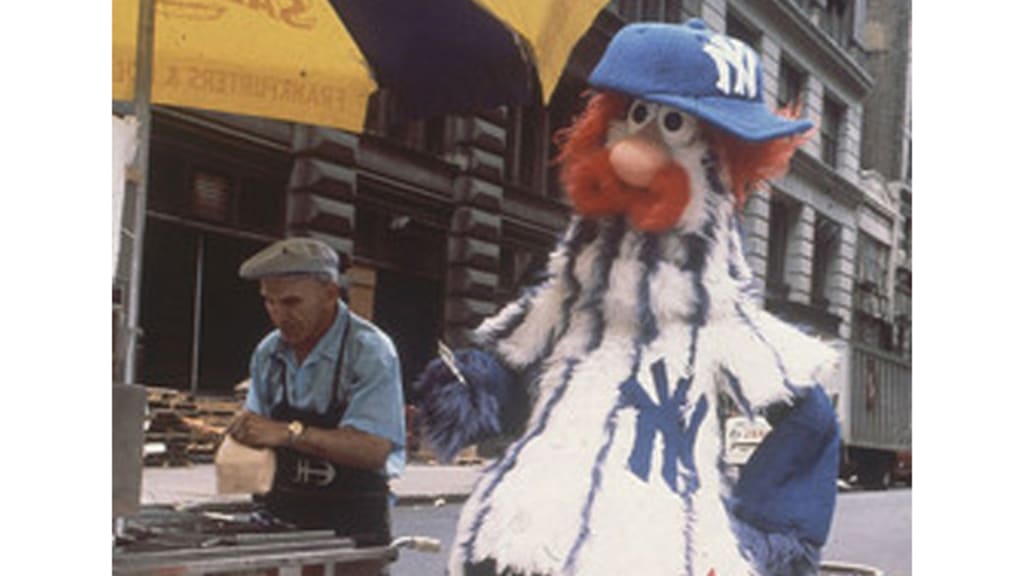
The poor guy really never had a chance. Just weeks before his scheduled debut, Yankees outfielder Lou Piniella got into an altercation with the San Diego Chicken -- the bird had just placed a hex on teammate Ron Guidry, which is admittedly kind of rude -- causing George Steinbrenner to publicly declare that mascots had no place in baseball. When Dandy did finally make his debut, he was confined to the upper deck at Yankee Stadium, the better to shield him from the fan base's negative reaction. He was quietly shelved a couple of years later, never to be spoken of again.
Souki, Expos, 1978
When you think Montreal mascots, your mind almost certainly goes to Youppi!, everyone's favorite bearded rascal who once got run from a game by Tommy Lasorda.
But before Youppi! stole Canada's heart, the Expos had tried to get into the mascot game with Souki, who I can only describe as "Mr. Met if he'd had his soul snatched by a dementor":
It will probably not surprise you to learn that Souki lasted just one year -- after being attacked by a father whose child was afraid of him.
The Baseball Bug, Indians, 1980-81
Again: The success of the Phillie Phanatic was both a blessing and a curse. I'm not sure why Cleveland management decided that its particular iteration of the lovable fuzzball archetype had to be a bug, specifically -- sorry, "a cross between a flea and a bird" -- but of course this is how it was going to turn out:
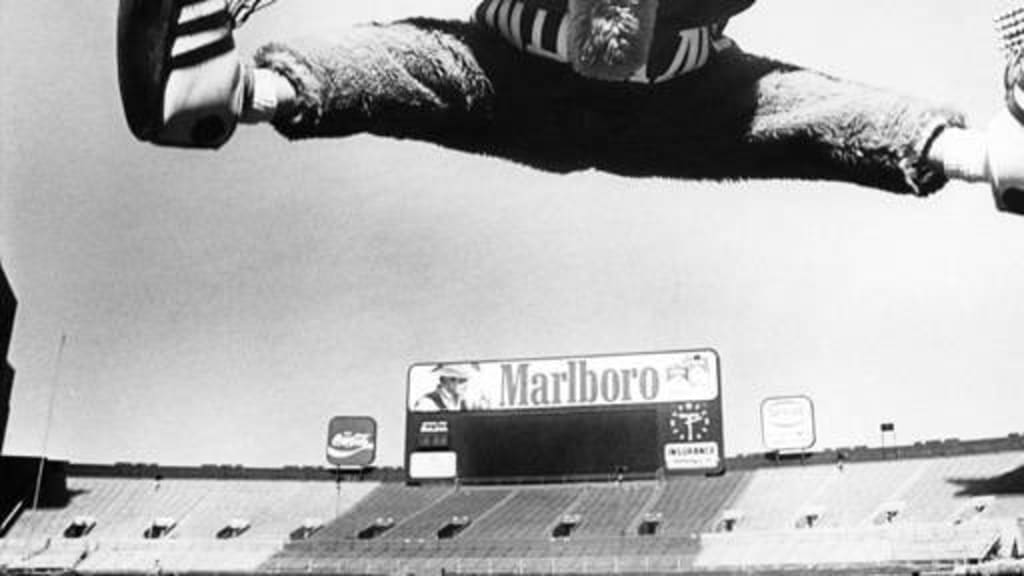
The bug faded into obscurity after a couple of seasons, only to unexpectedly return in 2007 to torture Joba Chamberlain:
Twinkie the Loon, Twins, 1980-81
While Pirate Parrot successfully adapted the Phanatic blueprint, another bird of the late '70s and early '80s ... did not. The common loon is the state bird of Minnesota, but that did not stop Twins fans from mercilessly dunking on poor Twinkie. Maybe it was the eyes:
Ribbie and Roobarb, White Sox, 1981-88
Of all the many Phanatic imitators, none were so meticulously faithful.
Upon purchasing the White Sox prior to the 1981 season, new owners Eddie Einhorn and Jerry Reinsdorf wanted to prove that they had both feet firmly planted in the modern era. One of their first orders of business was to beef up the team's marketing department -- and that meant, above all, a new mascot. The result: Ribbie and Roobarb, the former a purple anteater and the latter ... well, we're not sure what the latter was supposed to be. A long-lost relative of Oscar the Grouch, maybe?
The pair were everywhere in the early '80s. At Comiskey Park. On billboards. Even in TV spots.
Alas, they never could win over the hearts of the South Side -- in part because the team already had an unofficial mascot when Ribbie and Roobarb showed up. For years, Comiskey had been charmed by Andy Rozdilsky, aka Andy the Clown, whose antics -- and iconic cheer of "come on you White Sox!" -- became so beloved that stadium ushers began letting him in for free.
Ribbie and Roobarb forced Andy into the upper deck, and fans never forgave them until they were retired in 1988.
Crazy Crab, Giants, 1984
The previous entries in this list were earnest attempts at fan entertainment gone horribly awry. Crazy Crab, however, knew exactly what it was: a costumed anti-hero of sorts, an ironic response to the mascot boom of the early 1980s. Fans were actively encouraged to boo him, and manager Frank Robinson nearly assaulted him in a popular commercial:
Padres players Kurt Bevacqua and Bruce Bochy -- yes, that Bruce Bochy -- even tackled the Crab once, and the abuse became so much that his suit had to be reinforced with a fiberglass shell for protection. Sadly, Crazy Crab only lasted one season, but like every great cult hero, he's experienced something of a renaissance in recent years.
